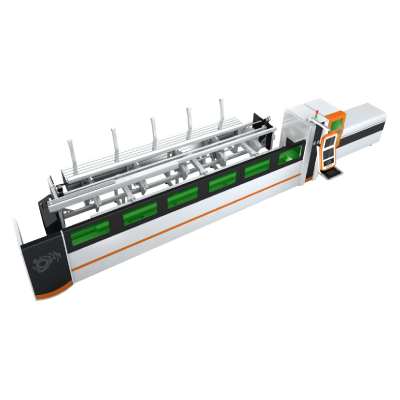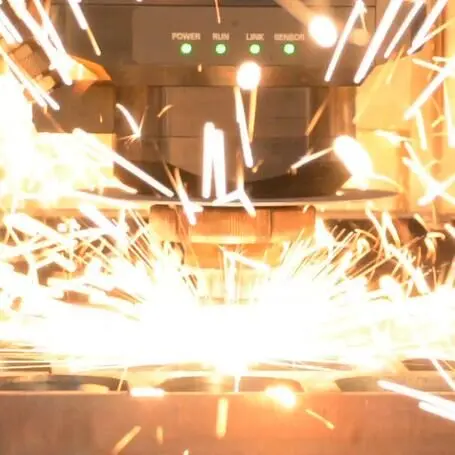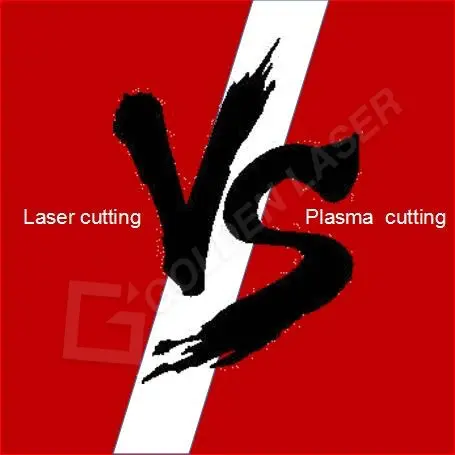In today’s fast-paced manufacturing environment, efficiency, precision, and versatility are crucial for staying competitive. One technology that has revolutionized the metal fabrication industry is the fiber laser cutting machine. Known for its incredible accuracy and speed, this advanced machinery has quickly become a favorite among manufacturers and fabricators. In this article, we will explore the advantages of using fiber laser cutting machines for metal processing, delve into their various applications, and highlight why they are becoming a vital asset in modern metal fabrication.

Understanding the Advantages and Applications of Fiber Laser Cutting Machines in the Metal Fabrication Industry
The Fiber Laser Cutting Machine: A Technological Overview
At its core, a fiber laser cutting machine utilizes a high-powered laser that is guided by fiber optic cables to cut through various types of metal. The laser itself is generated from a gain medium made of rare earth elements, resulting in a highly concentrated infrared light that can be precisely controlled. This allows for a clean cut with minimal thermal distortion, making it particularly suitable for cutting intricate designs and complex geometries that traditional cutting methods struggle to achieve.
Advantages of Fiber Laser Cutting Machines

Understanding the Advantages and Applications of Fiber Laser Cutting Machines in the Metal Fabrication Industry

Understanding the Advantages and Applications of Fiber Laser Cutting Machines in the Metal Fabrication Industry
1. **Precision and Quality**: One of the most significant benefits of fiber laser cutting machines is their ability to deliver high-quality cuts with excellent precision. The focused beam can cut through metals with thicknesses ranging from very thin sheets to several inches, resulting in smooth edges and reduced need for secondary finishing processes. This level of accuracy minimizes waste and ensures a better yield from raw materials.
2. **Speed**: Fiber laser cutting machines are known for their rapid cutting speeds, often exceeding those of conventional cutting methods. Their efficiency not only speeds up production processes but also allows for increased output, which is vital in meeting tight deadlines and high demand scenarios.
3. **Versatility**: These machines can cut a wide variety of metals, including stainless steel, aluminum, brass, and copper. Their adaptability makes them ideal for various manufacturing applications, from automotive parts to intricate art and signage. This versatility also extends to different thicknesses and shapes, providing fabricators with extensive production capabilities.
4. **Low Operating Costs**: Fiber laser machines are energy-efficient and require less maintenance than traditional lasers, which translates into lower operating costs. The use of fiber optics minimizes energy loss during transmission, and the equipment tends to have a longer lifespan. This results in a more cost-effective solution over time, allowing businesses to allocate resources to other critical areas.
5. **Environmentally Friendly**: With a growing emphasis on sustainability, fiber laser cutting machines play a role in reducing the carbon footprint of manufacturing processes. These systems generally use less energy and produce fewer toxic fumes and scrap compared to other cutting methods. Moreover, they can often operate in environments with lower ventilation requirements due to their reduced emissions.
Applications in the Metal Fabrication Industry
The applications for fiber laser cutting machines are vast and varied. They are commonly used in industries such as:
– **Automotive**: From cutting intricate components to producing bulky parts like frames and chassis, fiber lasers account for significant processes in automotive manufacturing. Their speed and precision help to maintain low production costs while ensuring high safety and quality standards.
– **Aerospace**: In aerospace manufacturing, precision is paramount. Fiber laser cutting machines are used to manufacture parts for aircraft, engines, and other critical components where exact specifications are crucial for safety and performance.
– **Consumer Goods**: Items like appliances, electronics, and furniture often require metal components that are cut with precision. The versatility of fiber laser cutting makes it possible to create complex designs that enhance the aesthetic appeal of products while maintaining functionality.
– **Signage and Decorative Metal Works**: Many artists and businesses use fiber laser cutting to produce intricate signage and art pieces. The ability to cut detailed designs with appropriate material thicknesses allows for a vast array of creative applications.
Conclusion
In conclusion, fiber laser cutting machines have transformed the metal fabrication industry by offering speed, precision, and versatility unmatched by conventional cutting methods. Their ability to maintain high-quality standards while reducing operational costs makes them an attractive option for manufacturers seeking to enhance their efficiency and competitiveness. As technology continues to advance, the role of fiber laser cutting in metal fabrication will undoubtedly grow, making it a cornerstone of modern manufacturing practices. Businesses that invest in this technology will not only improve their production processes but also position themselves for future success in an increasingly demanding market. Fiber Laser Cutter 1kw
